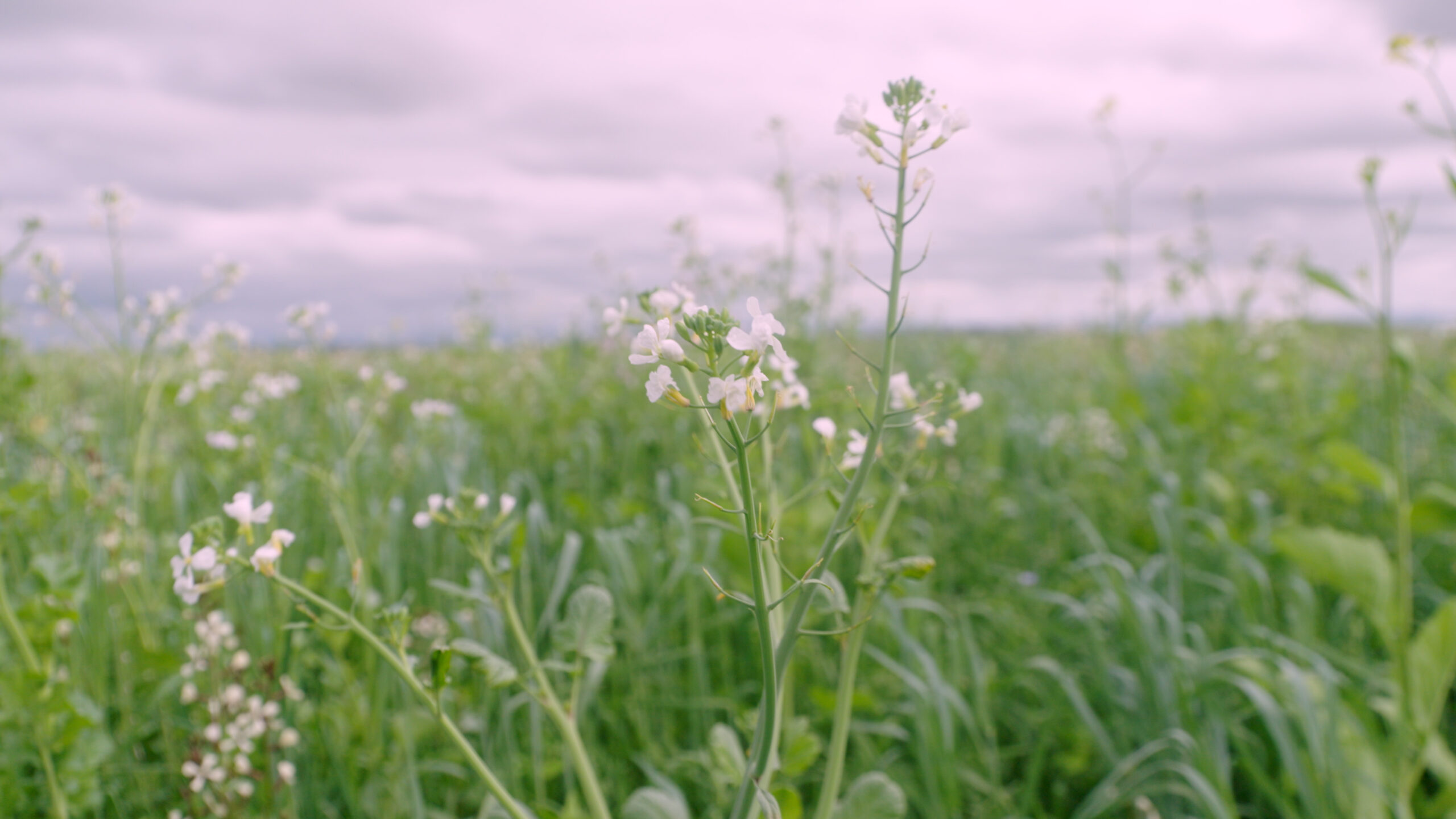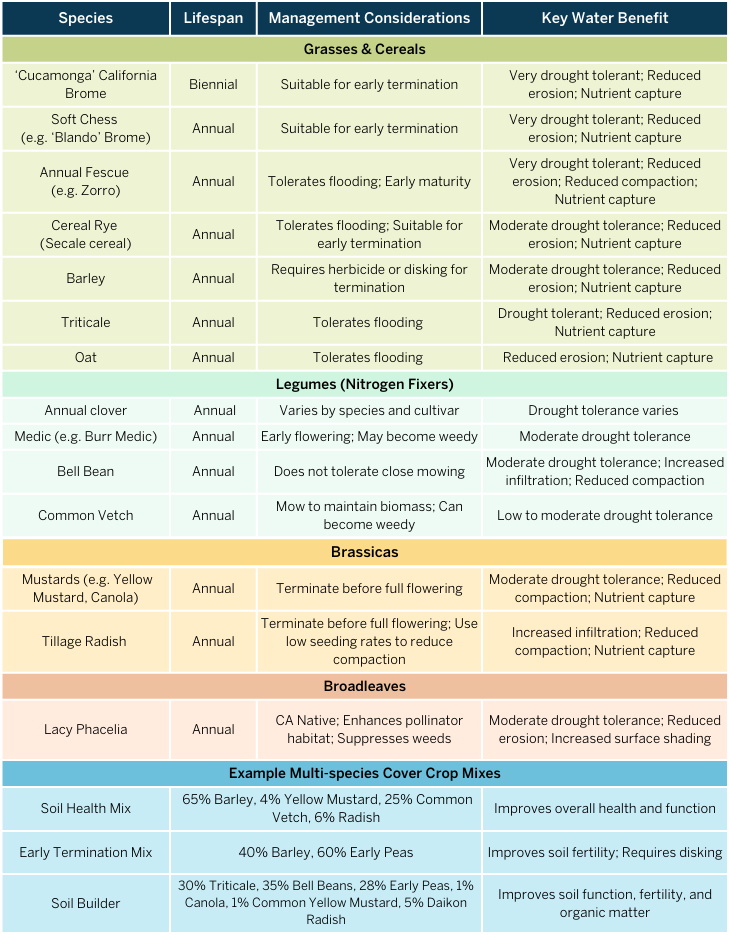Practical considerations for managing cool-season cover crops with maximal water benefits and minimal water use
Community Alliance with Family Farmers, Sustainable Conservation, UC ANR, and USDA are excited to share this new guidance document.
Download the guidance document here.
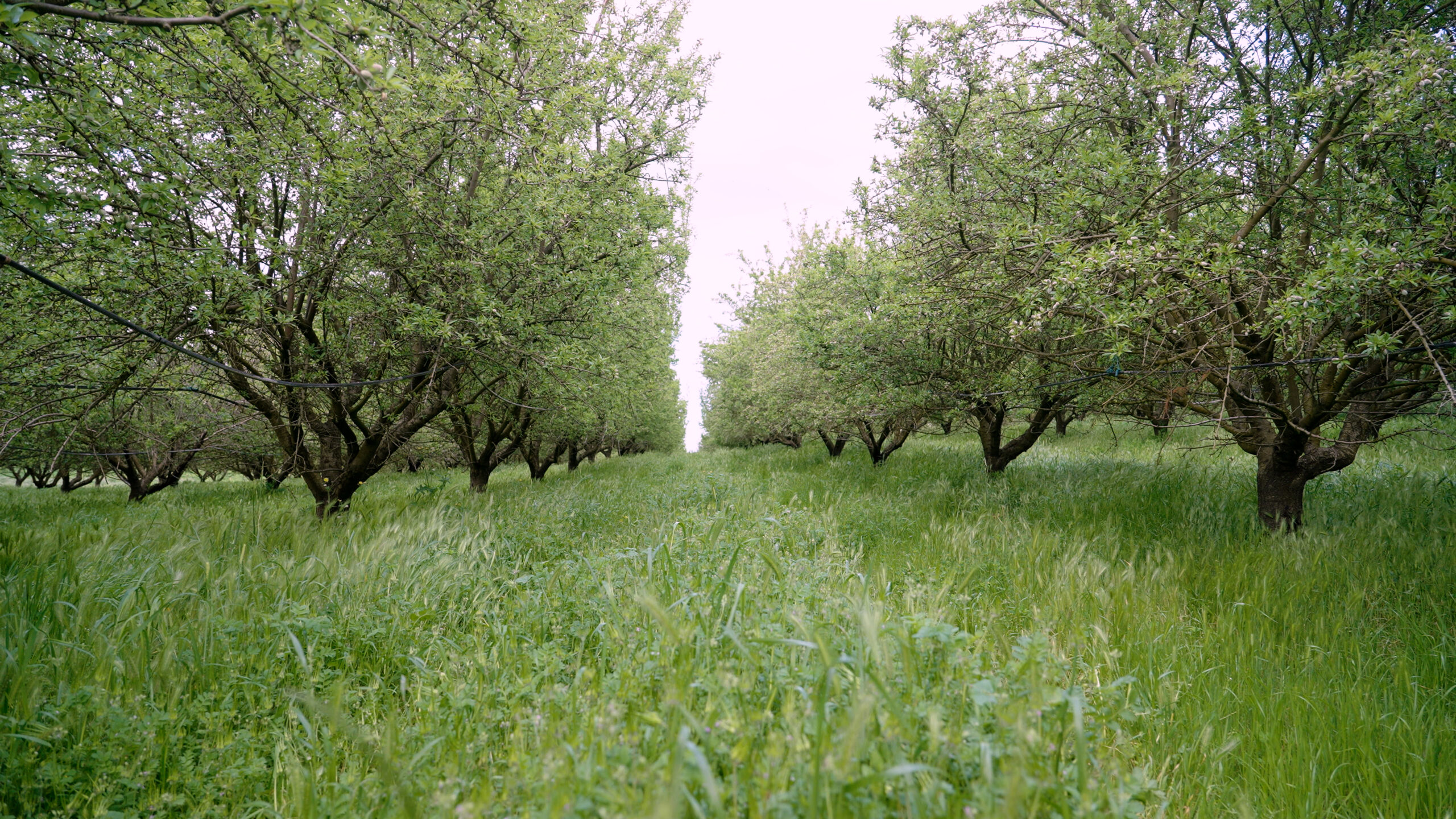
Water Benefits of Cover Crops
Cover crops can be highly beneficial in California’s annual and perennial cropping systems for improving soil health and fertility, suppressing weeds, providing pollinator habitat, and even reducing input costs.
Even in water-scarce regions, cover crops can provide water benefits when properly managed. This guidance outlines key considerations to achieve these benefits while reducing water use with cool-season cover crops. For best results, cover crop management should be adapted to your specific farm context — including cropping system, soil conditions, available equipment, and management goals.
Cover cropping can be managed to achieve a variety of management goals and these water-related benefits:
- Reduced runoff and soil erosion
- Reduced surface crusting and compaction
- Improved soil structure
- Increased organic matter, water-holding capacity, and soil moisture
- Increased water infiltration and percolation
- Reduced soil temperature and evaporation compared to bare ground
- Reduced water pollution from nutrient leaching and runoff
A common question is: How much water do cover crops use, and are they worth the water? With proper management, soil-water dynamics can be optimized.
Research has shown that water loss from cover crops, measured by evapotranspiration (ET), can be similar to bare soil in annual and perennial production systems across the Sacramento and San Joaquin Valleys1,2. In perennial crops, soil moisture can be similar for winter cover crop and bare management through or at the end of the winter season2, and in some cases, cover crops may lead to enhanced soil moisture well after termination3, although this may vary by farm context. In cases where winter cover crops do require additional water, it is likely minimal (≤ two inches) and may be worthwhile considering the potential benefits of increased water capture, reduced nutrient losses, improved soil health, greater biodiversity, and more. Considerations around species selection, and timing and method of cover crop termination are key to harnessing these water benefits while minimizing losses to ET.
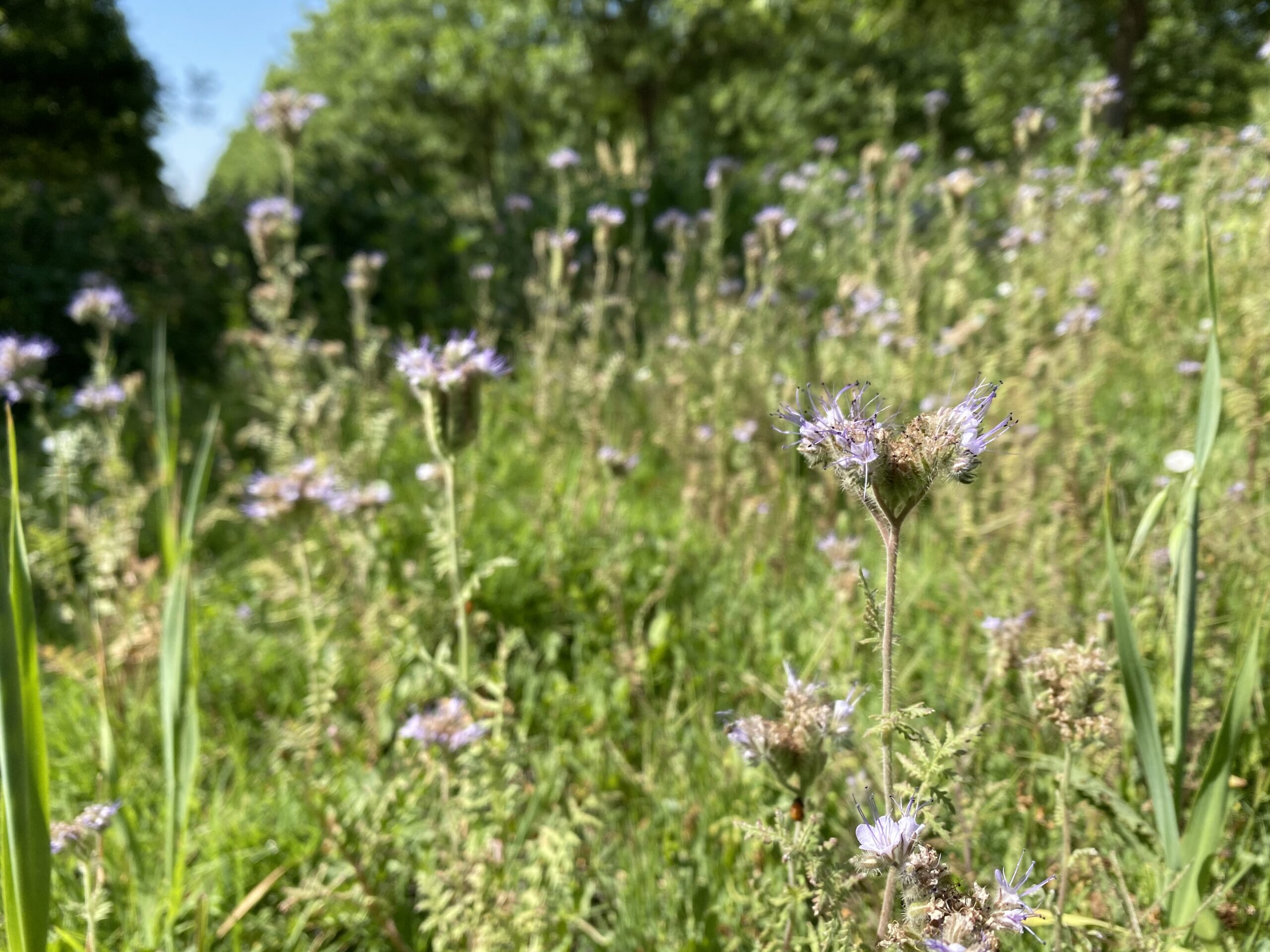
Management Considerations
Prioritize Your Goals
What are your goals and desired benefits? What are you looking for in terms of water, soil, and crop benefits? For example, regarding water, you might aim for reduced runoff, improved water infiltration, and greater water holding capacity.
Your farm priorities should inform cover crop seed selection and management. This guidance document focuses on cool-season cover cropping in water-scarce environments. Even in these environments, some growers choose to implement year-round cover cropping, which may have different management considerations. For more general guidance on selecting and managing cover crop species for your goals, see CAFF’s Cover Crop Decision Guides. See also Western Cover Crop Council’s resources page, Western SARE’s cover crop resources, and UC SAREP Cover Crops Database.
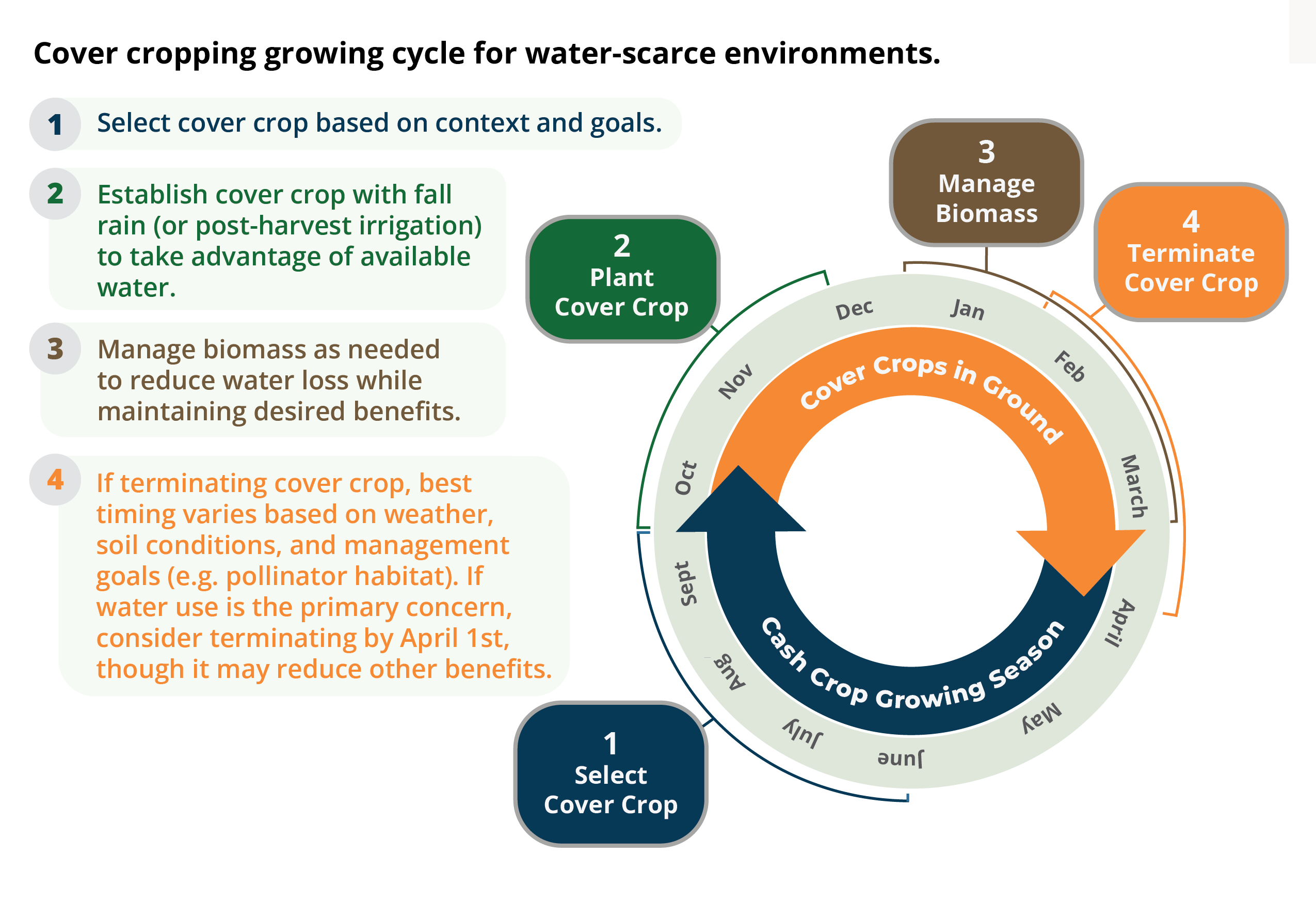
Select Cover Crop
- Commonly planted cover crop species and cultivars vary in water efficiency, temperature and moisture requirements, and ability to address various management goals.
- Selection should be farm-specific. Consider consulting a local TA provider or seed dealer.
- Consider drought-tolerant species or cultivars that are adapted to your region for greater resilience to local climate conditions.
- For California’s climates, select spring cultivars to maximize winter growth and early termination.
- Select cover crops you can effectively manage/terminate with available equipment in your cash crop context.
- If reseeding is a priority, ensure that reseeding varieties are used and cover crop is allowed to develop mature seed heads before final mow or termination.
- Cover crop species mixes are recommended to increase plant and belowground soil biodiversity, in addition to supporting multiple soil-water functions. Mix species that can be planted at similar depths.
Planting and Establishment
Planting
- Cover crop planting methods (i.e. drilling, broadcasting) affect seed-to-soil contact, which is critical for germination when water is limited.
- Grain drills or no-till drills provide good seed-to-soil contact and allow for more time between seeding and the first irrigation/ rainfall event compared to broadcast seeding without incorporation.
- Broadcast seeding results in lower seed-to-soil contact and seeds are vulnerable to weather and animals. Shallow incorporation is recommended, and works well with vertical tillage implements as a one-pass operation.
Establishment
- Good cover crop establishment can require less than 2 inches of water, which can come from rainfall, irrigation, or both4.
- Cover crops can be planted anytime in the fall, including before the first rain, for ease of farm operations. Planting in early to mid-autumn when day lengths are longer, is ideal for maximizing biomass growth, encouraging early flowering, and suppressing weeds.
- In orchards with micro sprinklers, solid set sprinklers, or flood irrigation, consider planting cover crop seed before post-harvest or dormant season water applications to support germination and optimize water use.
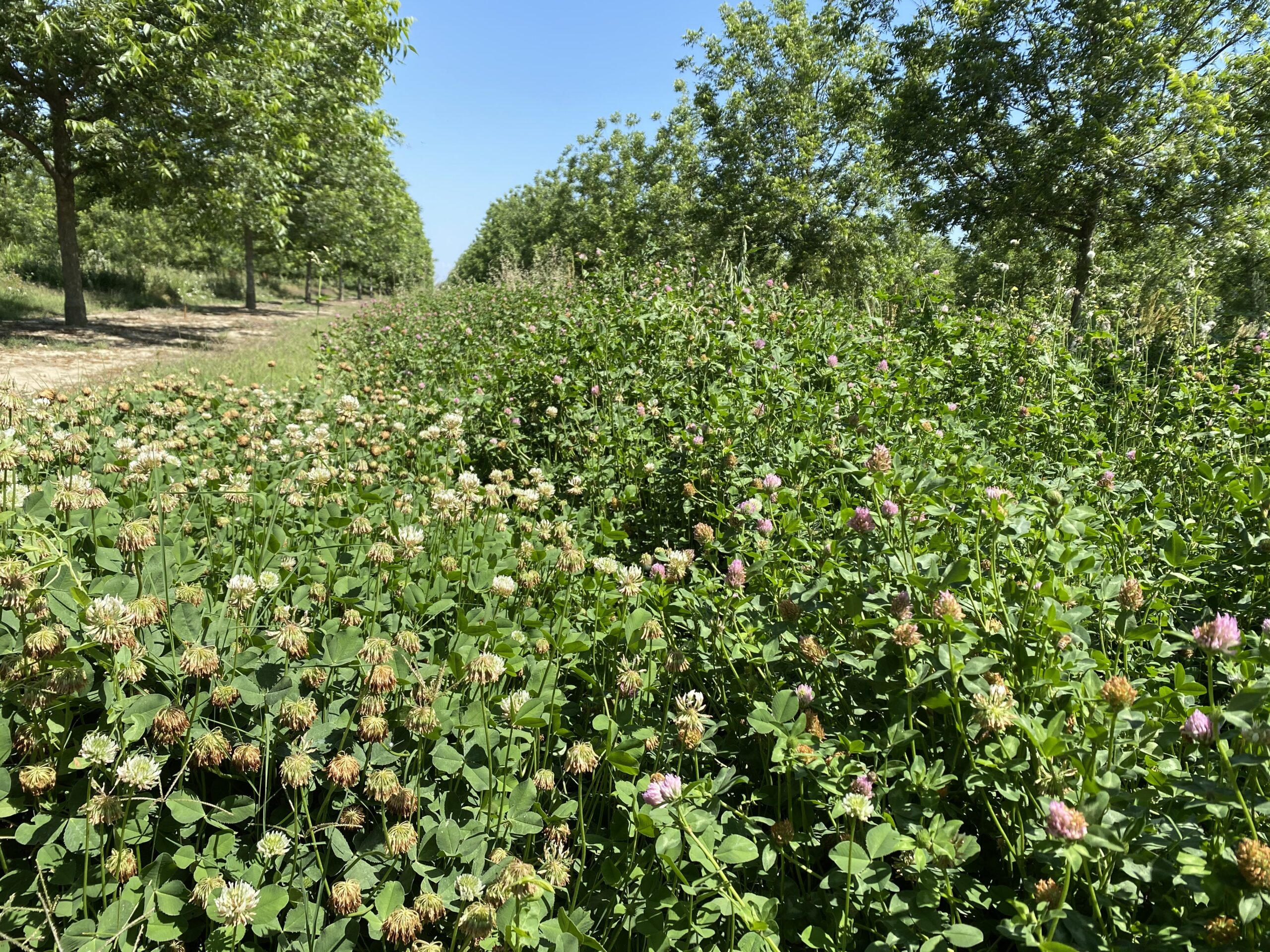
Maintenance and Termination
Maintenance
High mowing (≥ 6 inches) or well-managed grazing of cover crop biomass, when weather allows, may reduce soil water lost to transpiration while allowing for regrowth to meet management goals like increased soil health, fertility, nutrient scavenging, or water infiltration.
Termination
Consider your management goals (e.g. pollinator habitat, improved infiltration) and terminate late enough—if at all—to realize your desired benefits but early enough to reduce excessive water use. In particularly water-stressed environments, you may need to adjust your goals. Consider:
- Cover crop water use may increase with rising springtime temperatures and rapid plant growth.
- Generally, termination/reduction of biomass in late winter or early spring (as opposed to late spring) may equate to reduced cover crop water use (i.e. ET) and conservation of soil moisture for cash crops, particularly in a drought year.
- Cover crop species differ in their ease of termination so select a termination method (mowing, roller crimping, discing, etc.) that is appropriate for your cover crop goals, selected species, and soil conditions.
- Grazing for termination may be effective in high biomass situations if livestock graze heavily. Consult a technical assistance provider to avoid issues with food safety5 or toxicity to animals.
- Tracking soil moisture throughout the season is useful for optimizing irrigation efficiency and informing cover crop management timing, ideally terminating/reducing biomass as it declines.
- Many perennial growers who delay who delay termination until April or May, or who don’t terminate at all, find that the water benefits outweigh the water use. This is an area of active research2.
Residue Management
- Termination method and management of residue (whether incorporating or leaving it on the surface as mulch) will greatly affect soil-water dynamics.
- Cover crop residue left on the soil surface as mulch increases soil moisture retention by lowering surface temperatures and decreasing evaporative losses compared to incorporation.
Stacking Cover Crops with Other Soil Health Practices
Combining cover cropping with other soil health practices, such as compost application, reduced-till or no-till, or livestock integration, may result in amplified benefits, including water benefits and water use efficiency7, 8. Studies have shown that reduced tillage in combination with cover crops can provide improved infiltration rates, water holding capacity, and soil moisture content8, 9, and soil organic carbon increases significantly more when cover crops and compost are implemented together10.
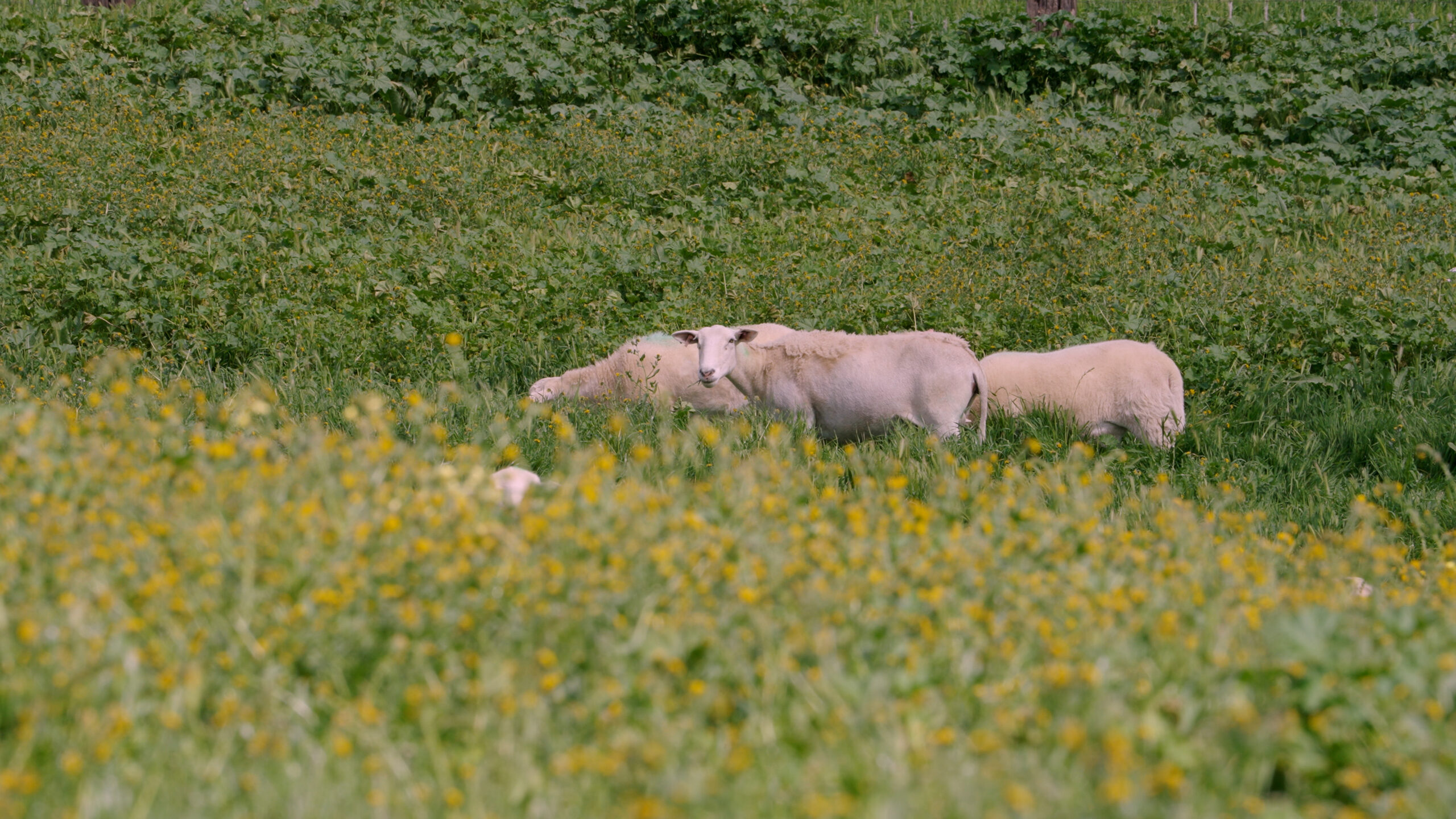
Drought Tolerant Species Selection
Resources and References
This report and other mentioned resources can be found at: https://linktr.ee/CoverCropGuidance
Contributors and Reviewers:
Emily Ayala* (CAFF) (Lead Author), Sarah Castle* (Sustainable Conservation), Sarah Light* (UC ANR), Tom Johnson (Project Apis m.), Shayan Kaveh (Sustainable Conservation), Margaret Smither-Kopperl (USDA NRCS), Vivian Wauters* (UC Sustainable Agriculture Research & Education Program), Sam Williams* (Sustainable Conservation), Qi Zhou (CARCD)
*Denotes authorship
References
- DeVincentis, A., Solis, S. S., Rice, S., Zaccaria, D., … & Mitchell, J. (2022). Impacts of winter cover cropping on soil moisture and evapotranspiration in California’s specialty crop fields may be minimal during winter months. California Agriculture, 76(1), 37–45.
- Flynn, M. T., Guerrero-Medina, O. G. M., McDonald, I. F., Anika, J. T., … & Suvočarev, K. (2025). A case study of evapotranspiration at five almond orchards on a spectrum of conventional to regenerative management. California Agriculture.
- Fernando, M., Scott, N., Shrestha, A., Gao, S., & Hale, L. (2024) A Native Plant Species Cover Crop Positively Impacted Vineyard Water Dynamics, Soil Health, and Vine Vigor. Agriculture, Ecosystems, and Environment. 367: 108972.
- Smither-Kopperl, M., & Borum, J. (2016). Evaluation of Drought Tolerant Cover Crops for California’s Central Valley at Lockeford PMC 2015 [Final Study Report]. USDA Plant Materials Center. https://www.nrcs.usda.gov/plantmaterials/capmcsr12903.pdf.
- USDA [Agricultural Marketing Service – AMS] (2011). NOP 5006 Processed Animal Manures Rev02 08 31 18. National Organic Program. https://www.ams.usda.gov/sites/default/files/media/5006.pdf
- Mitchell, J. P., Singh, P. N., Wallender, W. W., Munk, D. S., … & Hanson, B. R. (2012). No-tillage and high-residue practices reduce soil water evaporation. California Agriculture, 66(2).
- Acevedo, S. E., Waterhouse, H., Barrios-Masias, F., Dierks, J., … & Bowles, T. M. (2022). How does building healthy soils impact sustainable use of water resources in irrigated agriculture? Elementa: Science of the Anthropocene, 10(1), 00043.
- Gomes, A., DeVincentis, A. J., Solis, S. S., Zaccaria, D., … & Mitchell, J. (2023). Long-term reduced tillage and winter cover crops can improve soil quality without depleting moisture. California Agriculture, 77(1), 4–14.
- Mitchell, J. P., Shrestha, A., Mathesius, K., Scow, K. M., … & Horwath, W. R. (2017). Cover cropping and no-tillage improve soil health in an arid irrigated cropping system in California’s San Joaquin Valley, USA. Soil & Tillage Research, 165, 325–335.
- Tautges, N. E., Chiartas, J. L., Gaudin, A. C. M., O’Geen, A. T., … & Scow, K. M. (2019). Deep soil inventories reveal that impacts of cover crops and compost on soil carbon sequestration differ in surface and subsurface soils. Global Change Biology, 25(11), 3753–3766.
Acknowledgements
The guide is adapted from the collaboratively authored Cover Cropping in the SGMA Era report, which can be found in the LinkTree.
Funding for this resource was made possible through support from the California Department of Food and Agriculture (CDFA). Its contents are solely the responsibility of the authors and do not necessarily represent the official views of the CDFA or collaborative agencies
